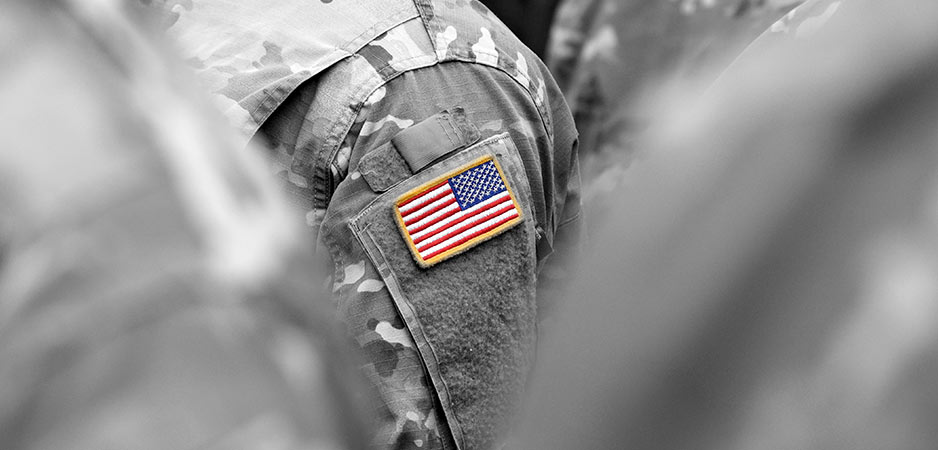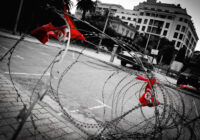In January, the US assassinated two crucial military figures — Iranian General Qassem Soleimani and Abu Mahdi al-Muhandis, the deputy head of the Iraqi Popular Mobilization Forces (PMF) — on Iraqi territory. This led the Iraqi parliament to vote in favor of the departure of all foreign forces from Iraq. The US refused, saying that “America is a force for good in the Middle East. Our military presence in Iraq is to continue the fight against [IS] … We have been unambiguous regarding how crucial our … mission is in Iraq.”
Hope Fades for New Talks in Yemen as Battles Intensify
Yet on March 17, US troops fighting the Islamic State (IS) group began their departure from the crucial al-Qaim base on the Iraqi-Syrian border. The withdrawal came amid the fall in oil prices — Iraq’s main source of income — and the COVID-19 pandemic. Two days later, the Qayyara West airfield in northern Iraq was handed over to the Iraqis by the US-led coalition. “The coalition will operate from fewer locations,” Brigadier General Vincent Barker said, “but remains committed to supporting our partners in their fight against [IS].” A week after this, foreign forces departed from the K1 base in Kirkuk.
The decision by Washington to leave three of the eight bases in Iraq shows a dramatic shift in policy. Questions arise over whether the US has a long-term strategy for Iraq and the Middle East and, if so, of what kind.
Iraq’s Leadership Position
Regardless of the Iraqi parliament’s vote — which was won by a narrow majority — the government’s position on the presence of US troops in Iraq appears ambivalent. Iraq’s political establishment has been through a recent crisis amid mass protests in 2019. Added to this, the Iraqis cannot really walk away from foreign military aid. The country is also divided amongst various political factions that enjoy positive relations with different international players — namely the US and Iran — whose objectives and interests in the region vary considerably and are in conflict with each other.
This has repercussions for Iraq. Given the alliances that political factions have with different countries, Iraq is politically fragmented and incapable of moving forward. Moreover, protesters have taken to the streets since October 2019, and the Iraqi establishment has proved incapable of handling this challenge. Activists have called for economic reforms and an end to corruption and foreign meddling in Iraqi affairs. The only reason protests have temporarily stopped is due to the COVID-19 pandemic.
In late November, after months of protests, Prime Minister Adel Abdul-Mahdi resigned. To date, three prime ministers have been designated: Mohammed Allawi was the first to withdraw, followed by Adnan al-Zurfi. Mustafa al-Kadhimi was finally chosen by parliament as prime minister on May 6, potentially ending months of political instability. Domestic divisions over the US presence in Iraq had complicated the task of forming a new government. Zurfi, for instance, was a vocal supporter of Iraq’s alliance with the US, and after being unable to obtain support from crucial political factions, he decided to resign.
The US in Iraq
The US, for its part, has withdrawn from Qayyara airfield, al-Qaim and Kirkuk, but it continues its fight against Iran and pro-Iran militias. It may sound counterintuitive, but both of these positions seem to follow the same logic, one that is arguably contributing to Iraq’s political crisis and regional instability. They reflect a rather immediate response to the failure of America’s confrontational posture.
Despite insisting that its “maximum pressure” policy on Iran is working, US troops in Iraq are not winning. Instead of facing that reality and developing strategies that would defend their interests, the Americans are escaping by leaving three crucial bases. Yet, at the same time, it is defending the policy of “maximum pressure” to the US public by staying in Iraq and fighting pro-Iran militias. If the US does not confront the actual reality — one that sees Iran-linked groups as becoming stronger and winning in its proxy conflict — and lead to it taking a different stance, Iraq will pay the consequences and the US position in the region will be further diminished.
The US strikes that killed Soleimani and Muhandis on January 3 were meant to “restore deterrence.” They did not. Quite the opposite, they opened up to a cycle of violence that does not seem to stop. In the past few months, Iran-linked groups have launched several attacks on US assets and personnel. On March 11, the Iraqi military base Camp Taji, which is just outside Baghdad, was the target of a hail of rockets. It killed two US servicemen and one British soldier. The day after, the US retaliated with airstrikes against the Iran-backed paramilitary group Kataib Hezbollah.
The strike on Camp Taji was just one in a series of attacks that did not begin after the assassination of General Soleimani and is not confined to Iraqi territory. In September 2019, an Iranian drone hit two major Saudi oil installations, proving that Iran is ready to push its adversaries to the extreme end of the confrontation. Such actions should be seen as a response to the US policy of “maximum pressure” on Iran’s economy, which the Trump administration announced in May 2018 to constrain Iran and its nuclear efforts.
Maximum Resistance
As analysts have argued, however, applying “maximum pressure” on Iran will only result in the Iranians responding with “maximum resistance.” The nature of Iran’s presence in the region — particularly the ties it has created with local political and military actors — makes its resistance hard to be fought. As a report by the Al Jazeera Centre for Studies says, “History has shown that only dialogue will work to constrain Iran.”
Iran’s conventional military is not technologically advanced and would not be prepared for a head-on confrontation with its main adversaries, the US or Saudi Arabia. However, it has developed extensive asymmetrical warfare capabilities. Iran has nurtured regional parties and proxies, who have their own agenda and interests. Since 2003 and the fall of the Iraqi Baathist regime under Saddam Hussein, Iran has built an extensive network of economic, political and military ties in Iraq. These relations are not exclusively military or political, which is precisely why they are hard to be broken. Hitting such groups militarily will have implications on the political field.
The PMF — the paramilitary groups that gathered in 2015 to fight the Islamic State — are usually referred to as “Iranian-linked groups.” However, many of these groups are militia wings of Iraqi parties and reflect crucial ideological trends of the Iraqi political scene. Such groups push the nationalist ideology of resistance against foreign powers. They may coordinate their actions with Iranian officials but, besides the assistance they receive from Iran, they do not lack motivation or capabilities to act on their own.
That is why provoking Iran on Iraqi soil could be dangerous. Not only will US troops be the target of retaliatory attacks, but US-Iraqi political relations will be severely damaged. Iraqi politics is highly fragmented. Aside from the Iran-aligned factions, there are others that are wary of Iran and are keen to collaborate with the US-led coalition. The assassination of Soleimani and Muhandis, however, offered a huge opportunity for Iraqi “resistance” fighters to come forward.
The fact that Muhandis, a crucial Iran-backed figure, was also killed is significant. He was the PMF deputy chief and one of the most influential Iraqi leaders of the “resistance” factions. Moreover, the decision to kill both Soleimani and Muhandis on Iraqi soil was taken unilaterally, without consulting Iraqi officials. That is the behavior of an occupying force, not that of a collaborating partner.
Broken Trust
It should come as no surprise if the trust that was built throughout the years with Iraqi partners is now severely damaged. The possibility of expelling US troops from Iraq had been discussed before but failed. That changed on January 5. Iraqi President Barham Salih, who is usually in favor of good relations with the US, recently criticized the Trump administration, condemning the “foreign bombing.”
Leaving three of the most crucial bases in Iraq, where the US deployed its forces against IS, should not be misunderstood as an act of recognition of Iraq’s military capabilities. The latter may be considered capable of confronting jihadist groups, only if one acknowledges that the PMF are not exclusively “Iranian-linked” militias. In fact, many of them are supported by Iran. But, as mentioned earlier, they cannot be dismissed as Iranian-proxies that are entirely alien to the Iraqi defense apparatus. Rather, they actually constitute Iraq’s defense.
In December 2018, one of Kataib Hezbollah’s commanders, talking about al-Qaim, told the BBC, “We will make them leave if they don’t want to leave.” He was right. Departing from such bases is the actual acknowledgment of Iran’s role in the fight against IS and of Iran’s capability in controlling the area.
As analysts have pointed out, the Iraqi-Syrian border around al-Qaim and the neighboring Bukamal will be vulnerable to the return of IS-affiliated groups for many years to come. “Any weakening of the Iranian-allied militias may provide an opportunity for the Islamic State to revive itself,” write Harith Hasan and Kheder Khaddour. This means that for better or for worse, Iraqi and Syrian leaders will be compelled to accommodate Iran’s will to some extent. The US departure is proof of Iran’s victory in the region.
While the “maximum pressure” policy is praised by the Trump administration to the American public, it seems that its negative repercussions are becoming apparent. Giving up the Iraqi-Syrian border to the Iranians and the “tit-for-tat” cycle of violence in Iraq may be seen as two sides of the same coin: the failure of the US policy against Iran and its proxies. As Maria Fantappie and Sam Heller have cogently argued, “there is a better way for the United States, albeit one with its own risks: restraint.”
If the Americans bite their lip and do not respond to Iran’s provocations, putting an end to this vicious cycle, this may lead to better relations with Iraq and its new government under Kadhimi. And if the US interacts with the Iraqis as equal partners, it may build closer ties with Iraqi leaders who have a problem with Iranian influence in Iraq.
*[Gulf State Analytics is a partner institution of Fair Observer.]
The views expressed in this article are the author’s own and do not necessarily reflect Fair Observer’s editorial policy.
Support Fair Observer
We rely on your support for our independence, diversity and quality.
For more than 10 years, Fair Observer has been free, fair and independent. No billionaire owns us, no advertisers control us. We are a reader-supported nonprofit. Unlike many other publications, we keep our content free for readers regardless of where they live or whether they can afford to pay. We have no paywalls and no ads.
In the post-truth era of fake news, echo chambers and filter bubbles, we publish a plurality of perspectives from around the world. Anyone can publish with us, but everyone goes through a rigorous editorial process. So, you get fact-checked, well-reasoned content instead of noise.
We publish 2,500+ voices from 90+ countries. We also conduct education and training programs
on subjects ranging from digital media and journalism to writing and critical thinking. This
doesn’t come cheap. Servers, editors, trainers and web developers cost
money.
Please consider supporting us on a regular basis as a recurring donor or a
sustaining member.
Will you support FO’s journalism?
We rely on your support for our independence, diversity and quality.






